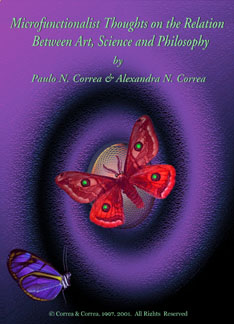![Akronos logo]](/images/akronos_wheel.jpg)
|
Akronos Publishing Concord, ON, Canada www.aetherometry.com |
![Akronos logo]](/images/akronos_wheel.jpg)
|
Akronos Publishing Concord, ON, Canada www.aetherometry.com |

(Micro)Functionalist Thoughts on the Relation between
Art, Science and Philosophy
by Correa, Paulo N. & Correa, Alexandra N.
Published in November 2001. 23 pages.
Philosophy of Science & the Politics of Thought
Monograph AS1-03
Price: US $15 ($12 ISFA)
|
ABSTRACT
Aetherometric theory addresses exclusively microphysical energy functions, aiming in the process to tease apart the real differences in nature between distinct manifolds and integrate their separate metrics as covariant and commensurate. Its energy theory is comprehensive and systematic; nevertheless, it does not form a closed system, but an open one, geared to engage energetic percepts and concept-functions that are at once qualitative and quantitative. The basic precursors of the microfunctional method of the aetherometric theory of energy are four-fold: Nietzsche's cosmological thought of Time, Reich's foundations of functional orgonometry, Bergson's and Deleuze's criticism of the Riemannian theory of manifolds or multiplicities, and Aspden's theory of the structure of the Aether as a synchronous lattice of quons. Our own interest in roots and genealogy is of no importance - all the less as Aetherometry consists precisely of a rhizomatic assemblage. However, Aetherometry as a theory, as an open system, differs in fundamental and exact ways from the open systems of these thinkers: it proposes a universal structure to energy and a principle of continuous variation that encompasses massfree energy, mass-energy and all massbound manifestations of kinetic energy; it treats Space and Time as distinct manifolds, both quantitatively and qualitatively; and it proposes a unitarian approach to concepts, functions and sensations - or their percepts. What follows is a draft attempting to situate the difficulty of a comprehensive interdisciplinary effort like that of aetherometric science. |